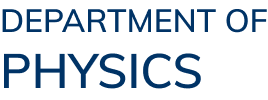Abstract
Wetting and adhesion are fundamental phenomena governing interactions of liquids and solids with soft materials. Droplet wetting on soft substrates typically induces significant surface deformations, forming characteristic wetting ridges around contact lines. Moreover, soft substrates can minimize interfacial energy through conformal contact with solid particles. In both wetting and adhesion scenarios, contact ridges play an essential role in regulating the rich surface mechanics observed on compli[1]ant substrates. However, the inherent stress divergence at contact points and the multiphase nature of soft, reticulated polymer gels present considerable theoretical challenges for continuum mechanics models aiming to comprehensively describe soft wetting and adhesion.
This dissertation presents a unified theoretical and experimental framework to unravel solvent-mediated phase separation at soft elastomeric interfaces. Leveraging in-situ dual-wavelength confocal microscopy, we introduce transformative advances in soft matter mechanics by simultaneously resolving contact deformations and polymer chain extraction dynamics during wetting and adhesion events. This enables unprecedented visualization of free chain migration that prevents stress divergence, self-similar domain growth following lg ∼ t ½ scaling, and irreversible plastic deformations exceeding elastocapillary limits. Our analysis demonstrates profound scaling laws: Wetting-induced phase separation follows a master equation derived from On sager’s variational principle, and the adhesion energy maintains W/ϒgv ≈ 1.9 across materials when normalized by the elastocapillary length le.
Geometric analysis of the phase-separated domains reveals self-similar growth kinetics with largely independent of viscoelastic network relaxation. Notably, substrate stiffness governs the equilibrium adhesion energy, while the droplet or particle size dictates the characteristic timescales of domain growth kinetics. Consistent growth trends observed across disparate material systems confirm the universal applicability of the identified dynamical principles. The presented scaling relationships and mechanisms open pathways to innovative applications, including time-programmable adhesives in biomedical devices, stiffness-tunable interfaces for adaptive soft robotics, and universal anti-fouling surfaces exploiting the invariance of W/ϒgv.
This work fundamentally redefines phase separation mechanics in compliant materials, establishing solvent migration as the primary mechanism for stress redistribution. Our findings provide an essential foundation for designing the next generation of intelligent, solvent-sensitive adaptive interfaces.
